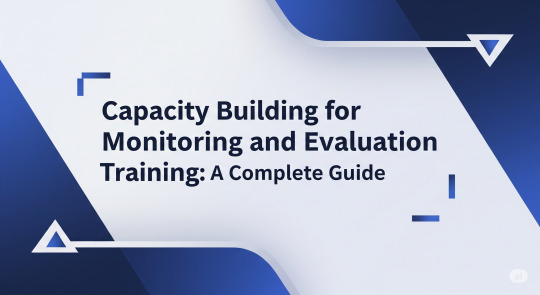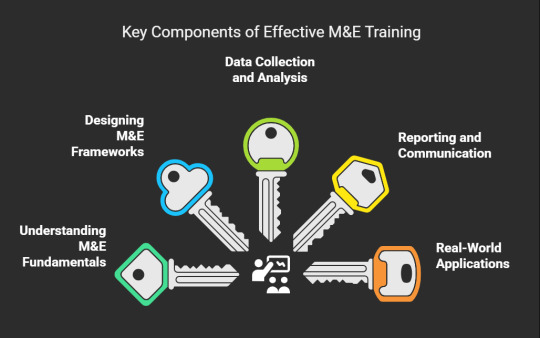Don't wanna be here? Send us removal request.
Text
Python is at the core of fintech’s evolution. Fueling high achievements in the sector, all thanks go to its flexibility, efficiency, and vast ecosystem of libraries. Known for its versatility, it has become a go-to language in Fintech. It is driving fintech firms to process transactions in real-time, predict market trends, boost security, etc. to give them a competitive edge in a fast-evolving industry. In this blog, we will explore why Python is at the heart of fintech’s future.
1 note
·
View note
Text
Google has brought a new update – the Analytics 4 (GA4) – a complete overhaul of how businesses track and understand user behavior. It brings a fresh approach to data collection. It dives deep into the user journey across websites and apps, giving marketers and business owners a more accurate, event-driven view of how users interact with their content. Many businesses and agencies have already made the switch. They have already recognized the need to start building historical data before UA is fully phased out.
If hundreds of metrics makes you feel like you are drowning in numbers, don’t worry, you are not alone. If you have never worked with GA4 before, this blog is for you. We will talk about the GA4 from the beginning and give you an introduction as well as the 12 best GA4 KPIs to monitor.
1 note
·
View note
Text
Companies are now turning to AI for smarter and more effective online/offline corporate training programs. Traditional training methods often struggle to meet the needs of different learners who are often in a single team.
AI and ML are redefining corporate training into something smarter and better – in every way possible. Companies are moving away from one-size-fits-all training. In this blog, we explore how AI and ML are reshaping corporate training.
1 note
·
View note
Text
The real impact comes only when there is a DevOps mindset across the office. And leaders and managers play a key role in fostering this culture. They are the ones who help teams break silos, automate workflows, and continuously improve. In this article, we will explore 7 key strategies for building a DevOps culture. By using them, CTOs, managers, and tech leaders can build a strong DevOps mindset to reap real business value.
1 note
·
View note
Text
In this article, we break down what is serverless computing or architecture. We also touch upon its benefits and why it is a game-changer for developers. Whether you are building web applications, APIs, or microservices, understanding serverless architecture can be a huge game-changer for you.
1 note
·
View note
Text
6 DEI Strategies to Create an Inclusive Office That Drives Success

Strong DEI (diversity, equity, inclusion) practices also bring real business benefits. That is why many companies are already adopting DEI strategies in 2025. In this article, we will break down why DEI matters and how it benefits both employees and businesses. Plus, we will also break down the 6 practical DEI strategies that you can adopt to climb up the success ladder.
Read more on our blog- https://blog.educationnest.com/6-dei-strategies-to-drive-success/
1 note
·
View note
Text
Capacity Building for Monitoring and Evaluation Training: A Complete Guide

Monitoring and Evaluation (M&E) is a critical function for organizations working in development, nonprofits, and even corporate sectors. However, many professionals struggle with gaps in their M&E knowledge, making it difficult to track progress, measure impact, and make data-driven decisions.
If you’ve ever felt unsure about designing M&E frameworks, collecting the right data, or analyzing results effectively, you’re not alone. The good news? Capacity building in M&E can bridge these gaps and turn you into a confident, skilled professional.
In this blog, we’ll break down everything you need to know about M&E training—why it matters, key skills you’ll gain, and how to choose the right program. Plus, if you're ready to take the next step, we’ll show you a proven way to build your expertise.
Why Capacity Building in Monitoring and Evaluation Matters
Many organizations face common challenges when it comes to M&E:
Lack of skilled staff – Without proper training, teams struggle to set up effective M&E systems.
Poor data quality – Inaccurate or incomplete data leads to unreliable insights.
Low stakeholder engagement – When teams don’t understand M&E, they don’t see its value.
Inefficient reporting – Reports fail to capture real impact, making it hard to secure funding.
Capacity building in M&E tackles these issues by equipping professionals with the right tools and knowledge. Whether you’re an M&E officer, program manager, or development professional, structured training can help you:
Design strong M&E frameworks
Collect and analyze data effectively
Improve decision-making with evidence
Communicate impact clearly to stakeholders
Key Components of Effective M&E Training
Not all M&E courses are the same. A high-quality program should cover these essential areas:
1. Understanding M&E Fundamentals
Before diving into complex techniques, you need a solid foundation. A good course will explain:
The difference between monitoring and evaluation
Key M&E terms and concepts
How M&E fits into project management
2. Designing M&E Frameworks
A weak framework leads to weak results. Training should teach you:
How to set clear indicators and targets
Logical framework approaches (logframes)
Theory of Change (ToC) development
3. Data Collection and Analysis
Many professionals struggle with turning raw data into insights. The right training will help you:
Choose the best data collection methods (surveys, interviews, focus groups)
Use tools like Excel, SPSS, or KOBO Toolbox
Interpret data to make informed decisions
4. Reporting and Communication
If stakeholders don’t understand your reports, your hard work goes unnoticed. Learn how to:
Create clear, compelling reports
Use visualization tools (charts, graphs, dashboards)
Present findings in a way that drives action
5. Real-World Applications
The best training includes case studies and practical exercises, so you can apply what you learn immediately.

Who Needs M&E Training?
M&E skills are valuable across multiple roles:
Project Managers – Need to track progress and measure success.
M&E Officers – Must master data collection, analysis, and reporting.
NGO & Development Professionals – Require impact measurement for donor reports.
Government Officials – Use M&E to assess policy effectiveness.
Researchers & Consultants – Need strong data skills for evidence-based recommendations.
If your work involves planning, tracking, or assessing programs, M&E training will make you more effective.
How to Choose the Right M&E Training Program
With so many courses available, how do you pick the best one? Look for these features:
Practical, Hands-On Learning – Avoid theory-heavy courses. You need real exercises and case studies. Experienced Trainers – Learn from professionals who have actually worked in M&E. Certification – A recognized certificate adds credibility to your skills. Flexible Learning Options – Online, in-person, or blended formats to fit your schedule.
Ready to Build Your M&E Skills? Join Sambodhi’s Certification Program
If you’re serious about mastering M&E, Sambodhi’s Monitoring and Evaluation Certification Program is designed for you. This course gives you practical skills through real-world examples, expert guidance, and interactive learning.
What You’ll Learn:
How to design and implement M&E systems
Advanced data collection and analysis techniques
Best practices for reporting and impact assessment
Why Choose Sambodhi?
Learn from industry experts with years of field experience
Get a recognized certification to boost your career
Flexible online learning that fits your schedule
Don’t let gaps in your M&E knowledge hold you back. Enroll in Sambodhi’s M&E Certification Program today and take the next step in your professional journey.
Final Thoughts
Capacity building in M&E isn’t just about learning concepts—it’s about gaining skills that make a real difference in your work. Whether you’re improving project outcomes, securing funding, or making data-driven decisions, the right training will set you up for success.
If you’re ready to move from uncertainty to confidence, invest in structured M&E training. The skills you gain will pay off in better projects, stronger reports, and greater career opportunities.
Have questions about M&E training? Drop them in the comments—we’d love to help!
2 notes
·
View notes